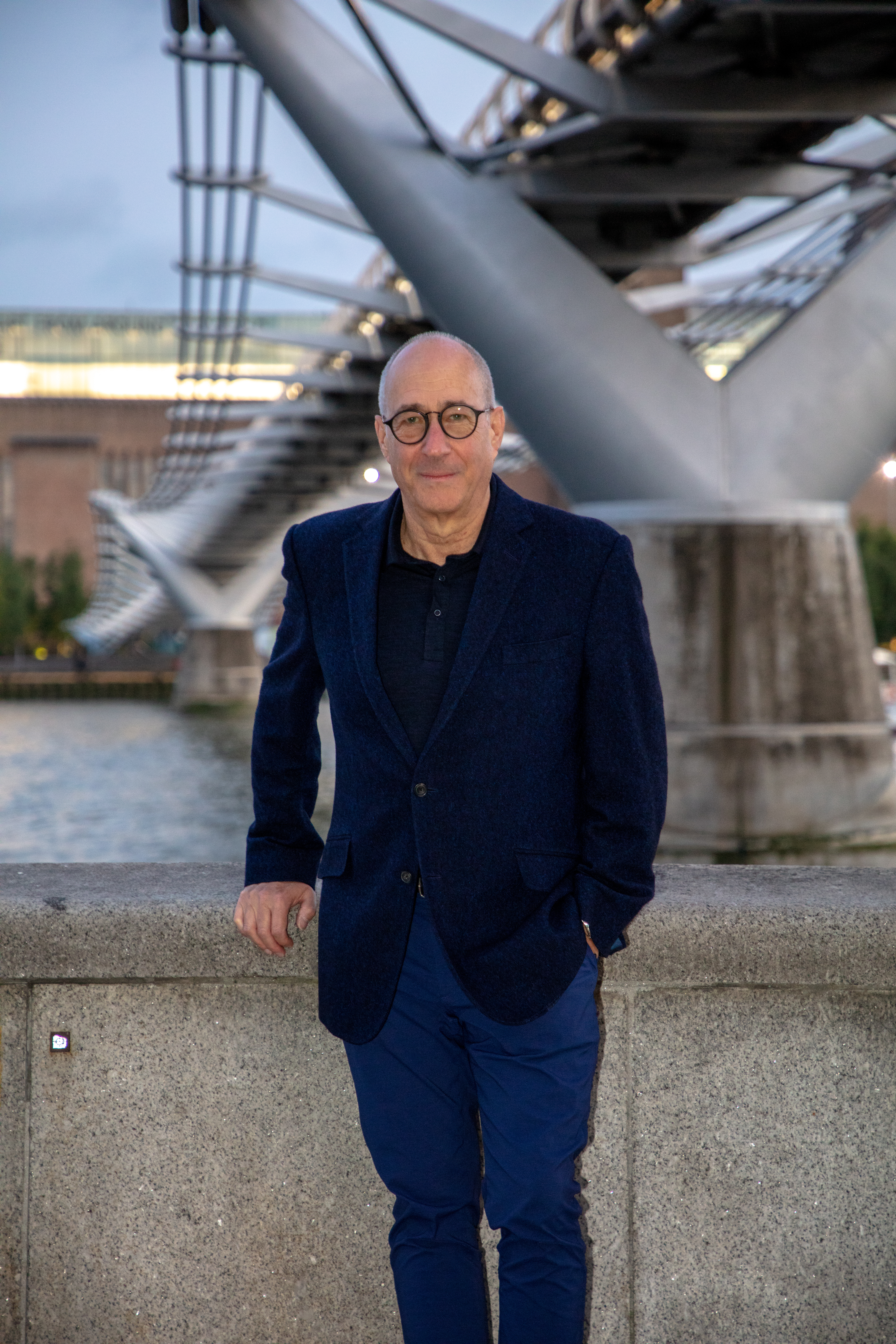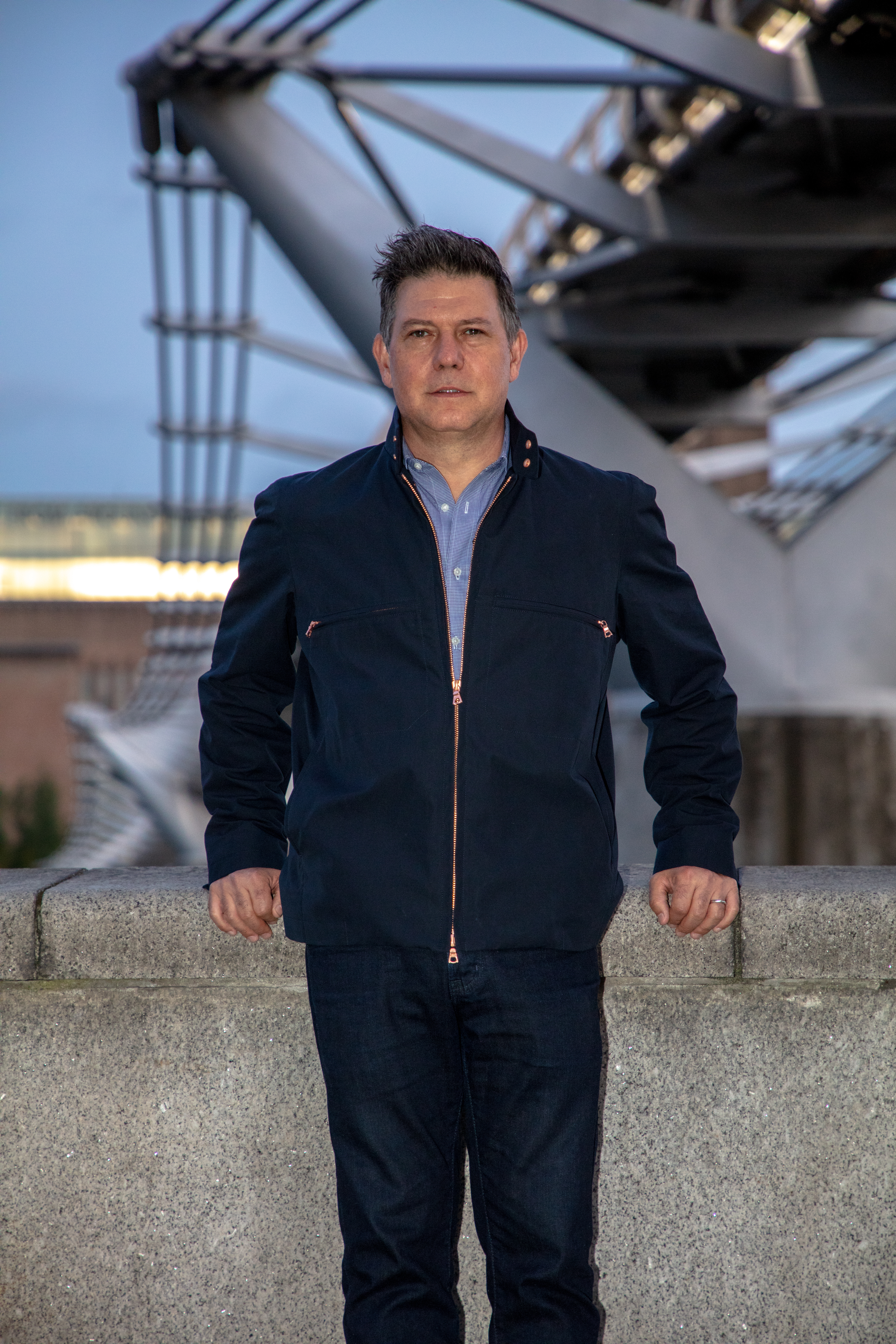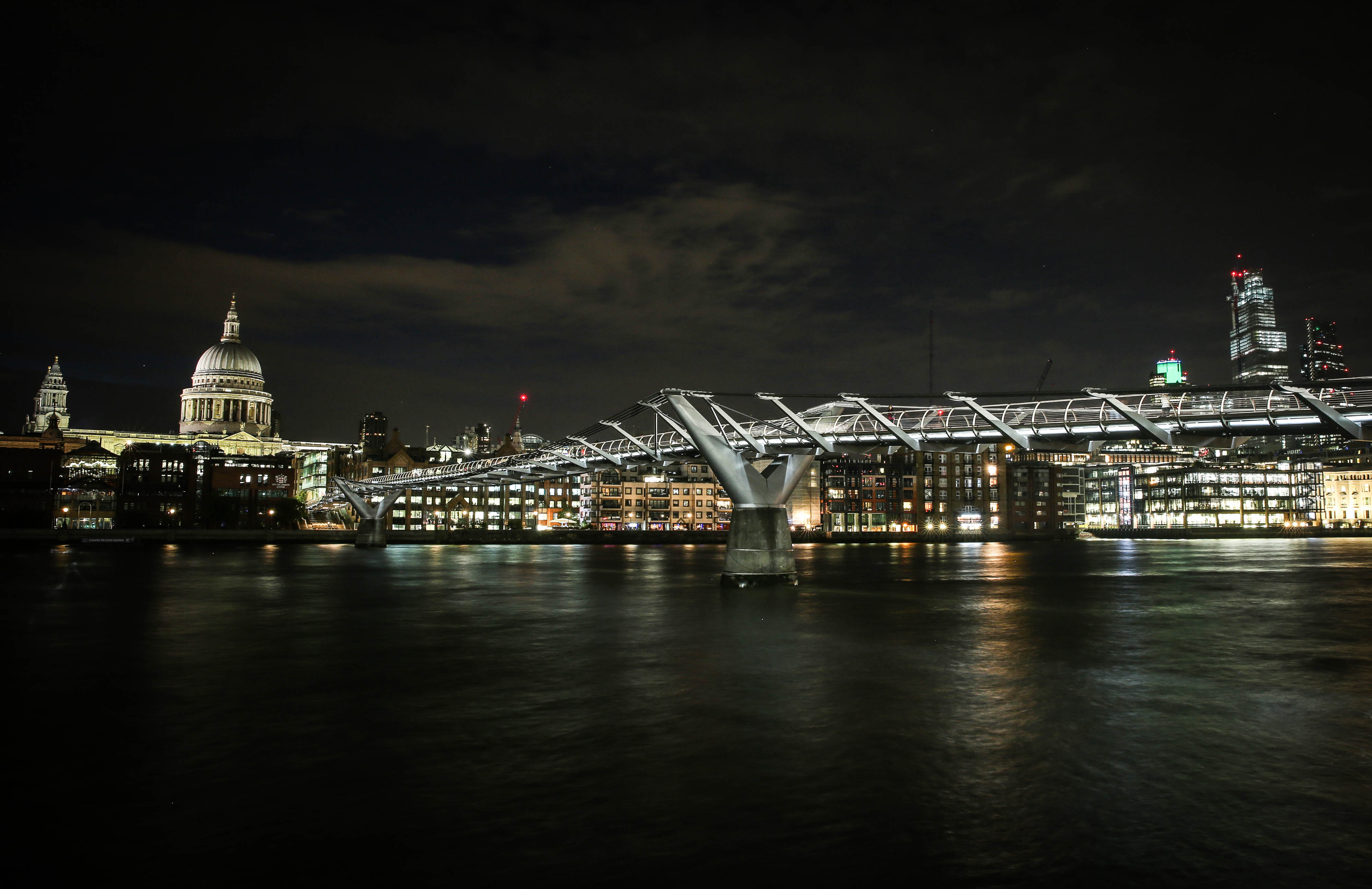Leo Villareal and Alex Lifschutz discuss their Illuminated River project, mathematical art and architecture for our Anthropocene
London Bridge, Cannon Street, Southwark and the Millennium bridge are now illuminated – the first four of sixteen bridges to reconfigure London and the river Thames in a promulgation of ever-evolving light hues and shifting patterns.
A mathematical artwork and beauty. Starting from John Conway’s Cellular Automata – the Game of Life – a programming structure that effectively develops its own ability for decision and transformation – artist and architect duo, Leo Villareal and Alex Lifschutz have developed, over the course of two years, their own sustainable light sequencing project, set to illuminate and rebalance the river Thames. The ongoing public art commission employs energy efficient LED technology – bridging art, history, design and mathematics, whilst addressing key issues facing London wildlife, community and our Anthropocene.
One in ten children in London have never seen the central London stretch of the Thames. A disheartening figure. And whilst austerity policies, the highest recorded rate of child poverty in the UK and a high cost of living are indicative of this statistic and the gross disparity between many of the different London Boroughs, it also reflects a growing disengagement with London’s natural spaces.
This is one issue the philanthropic initiative, launched by Sadiq Khan in 2016, attempts to address. Launching a fund for community led projects responding to Illuminated River, as well as a public programme of events, including music from the composers at the London Guildhall of Music, a number of research projects investigating the art and heritage of the river Thames as well as involvement of local schools in events and learning, Illuminated River conceives not only a physical transformation but a novel engagement with our natural spaces, whilst conceding to and implicating itself within our digital evolution.
Alongside patronage from UNESCO, the project works within the historic and artistic construct attached to each particular bridge, in a significant shift toward new digital perspectives. Reducing current light spill and pollution – prevalent to our global issue, providing an improved environment for the Thames wildlife and flora and employing energy efficient LED light technologies, Illuminated River serves to connect different spans of London life through a strategic, communicative and contemplative piece of artwork and architectural design.
The winners of the 2016 Illuminated River International Design Competition spoke to Port about their pan-London project – illuminating, re-framing and, most hopefully, re-engaging a community.

You were the winning team behind the 2016 the Illuminated River International Design Competition commissioned by London Mayor Sadiq Khan. How did the collaboration come about?
Alex Lifschutz: The collaboration was mostly an organic process. However it has gone beyond that, with an extensive collaboration emerging from our win between local authorities, river related organisations and business and cultural partners. We were aware of how expansive this project would be, however looking back over the project now that we’ve reached the first phase, the scale of it is incredible. The project spans seven local authorities and requires close collaboration with heritage bodies due to the fact that nine of the bridges are listed and we border two world heritage sites. We consulted with wildlife and zoological societies early to ensure that our project was not detrimental environmentally and have created the first central Thames surveys of bats and birds breeding locations. This a truly pan-London project and the communication between all bodies involved is paramount to its success.
In this particular collaboration between artist and architect, mathematics is central to both of your practices. Can you expand a little on the process of design for the LED installations and the sequences of light patterns that produce their shifting hues?
Leo Villareal: This type of mathematics is something that I prefer to refer to as Sequencing. This is the process of programming an LED artwork such as those that will be used on the bridges. I have certain ideas about pattern and colour and then begin to explore the possibilities. I do not know in advance what form it will take. I use my custom made software and techniques of artificial life and emergent behaviour as a basis from which to begin conceptualising how this might look as a sequence and then I wait for something surprising to occur and capture that moment. I engage chance and improvisation in my process and the series of discoveries I make result in the building blocks from which the artwork is created.
Alex: For us, the project has meant we’ve had to help facilitate the vision Leo has had for the bridges whilst maintaining the architectural integrity of these historic structures. Every bridge is different. From the outset a key challenge, and ultimately one of our success stories in design terms, has been to work across 15 different bridges, using only a small (6) range of light fixture types and fixing those to the bridges in a consistent way, whilst making sure we create a solution that is responsive to the various quirks of each of the 15 bridges.

Bridges are above all else places of movement, connecting North to South, point A and B. You not only bring light to the river Thames bridges with the Illuminated River project but also a kinesis. Why is it that you chose to employ these shifting hues, and not perhaps a still installation?
Leo: My aim has always been to mimic the ever-changing movement of the river, using shifting hues that are drawn from the London sky during sunset, in moonlight, and at sunrise. These expressive light compositions carry on the traditions of artists such as Monet, Turner, and Whistler, who were inspired by the Thames and interested in the blending of art and science, excelling in rendering light through the mixing of colour. It was clear to me that in order to capture the spirit of the Thames, these illuminations had to be kinetic, they had to be physically tangible and constantly evolving in a way that cannot necessarily be captured by a “still” installation.
You both have a tendency for creative adaptation of existing structures. For Illuminated River, the initial stage of the project is unveiled this summer 2019, illuminating four bridges along the river Thames. How did you go about re-imagining these particular bridges, maintaining their separate cultural and historical identities?
Leo: Starting my first visit to London when we were shortlisted for the Illuminated River and on the last 12 visits over the last 2 years, I have spent many nights walking along the banks of the Thames, looking at the water, bridges and most importantly the way people interact with the site. I believe this effort will result in a rebalancing of the use of light and hopefully will change the way people see the city itself. My goal has always been to reveal the beauty and history that is there in a subtle way that breathes life into the bridges and celebrates their individual personalities.
The project employed the help of a list of different consultants, ranging from teams specialising in the structural, in ecology, marine engineering as well as bats and birds. Was there anything that you learnt from these collaborations that particularly stands out for you?
Alex: This kind of installation is about the public realm, the city, the spaces between buildings. This meant working with consultants to ensure the project was accessible and tailored specifically to its environmental context. There are a number of considerations to be made on a more technical level – for example, we have to ensure that all the tech kits attach seamlessly to the bridge structures, and especially with 9 of the bridges being listed, this has to be done in a way that enhances their architectural beauty in daylight as well as providing the canvas for the artwork at night. In addition, obtaining planning permissions and consents for all 15 bridges was a monumental undertaking. All of this culminates into an experience that has helped us to better understand the history and language of these bridges as well as the city itself.
IMAGE
Reframing the Thames bridges within a more philanthropic context, it was interesting to think about them as not only connectives between North and South, but between history, culture, community, wildlife and environment. What is it about urban scale art that interests you as a medium?
Leo: When cities are built up, it often hard to see their core elements, the underlying structures and rules that govern how they work. In this way, I find that my practice is concerned with stripping down these systems so as to better understand urban space and our surroundings. I start at the beginning and look for the simplest forms…the simplest common denominators like pixels or binary code so that I can build these elements into something resembling a framework. Based on an urban environment, I like that I programme my work to change and evolve; to interact and grow into something that’s more complex and perhaps more revealing. Mathematics and John Conway’s work with Cellular Automata is certainly something that has inspired the way I work and the way I see things. Naturally, within the built environment where every day is a game of chance and where structures, people and places are shifting constantly, it feels right that my work can naturally fit inside of that.
Sustainability is a key focus of Illuminated River, using energy efficient LED technology, reducing light pollution and spill and providing an improved environment for the Thames’ fauna and marine life. At a time when our Anthropocene has become, more than ever, a pressing and contentious political concern, how do you think this project can help mould a better future?
Alex: The extent of collaboration that has gone on within this project has been unprecedented. All the partners of this project including Leo and the Illuminated River Foundation have ensured that comprehensive ecological assessments have been undertaken , providing a minimal effect on natural wildlife around the bridges and that light pollution in comparison to the current bridge lighting is reduced and improved. Working together with so many individuals that care about our ecology and environment certainly provides hope that other projects can do the same. As an architecture practice, being committed to the idea of keeping our planet healthy is integral to creating architecture for the future.
Follow the Illuminated River Project here







